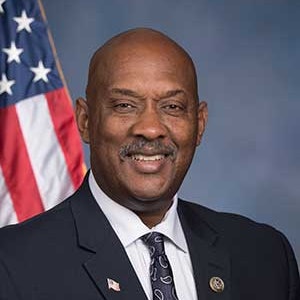Legislation aiming to take a closer look at potential demographic disparities among those applying for and being nominated for military academies is underway, recently passing in the U.S. House of Representatives. U.S. Rep. Dwight Evans
U.S. Rep. Dwight Evans
The legislation – sponsored by U.S. Rep. Dwight Evans of Pennsylvania – is an amendment in the 2022 National Defense Authorization Act, one of Congress’s annual must-pass bills. Evans said that the amendment did not face any opposition.
The amendment expands on the PANORAMA Act – included in a prior NDAA – which created an online portal for congressional nominations to military service academies that allowed applicants to self-identify gender, race, and ethnicity,
“The Evans amendment would expand the reporting requirements to direct the Department of Defense to also identify and specify any disparities in these demographic categories and provide assessments on why these disparities may exist within the application and nominating process,” said Ben Turner, a spokesman for Evans. “The goal is to get the Defense Department on the record identifying that the lack of diverse applicants and nominees to the academies exists and identify issues that could cause these disparities for Congress to address through further action.”
Having this information allows for the addressing of disparity issues, Evans said, adding that there was indeed a gap.
2019 cadet diversity information from the U.S. Military Academy at West Point show that cadet gender is 77% male and 23% female. As for ethnicity, the same data showed that cadet demographics were 63% white, 12% Black or African American, 10% Hispanic, 8% Asian, and 1% American Indian and Alaska native.
"There's huge opportunities in the military academies,” Evans said. “We want to make sure that our academies are reflective of the various aspects of our society. In the day and age we live, we want to ensure it is reflective of our society. And you can only do that again by being aware, by having this information gathering."
This amendment comes as part of a larger movement – from both higher ed and the U.S. military – to push for greater diversity and inclusion, said military scholar Dr. Peter D. Feaver, a Duke University professor of political science and public policy.
Col. Arthur Primas Jr., director of admissions at the U.S. Air Force Academy (USAFA), said that diversity was valued at USAFA and the Department of the Air Force.
“The Department of the Air Force and Air Force senior leaders value diversity and the strengths that it brings to the Air Force and Space Force because we value that diversity of thought, diversity of experience, and all the different things that people bring collectively to the AFA,” Primas said. “We bring people in from all corners of the country and in parts of the world, and they all bring something unique in terms of their backgrounds, their experiences, and the way they look at problems, the way they look at finding solutions. And so, all of those things collectively strengthens us, not only as an academic institution, but also as an institution that is building leaders of character for Air Force and Space Force service."
Primas declined to comment on pending legislation.
Still, Feaver sees the diversification of the military academies as something that will happen over time, likening it to their slower gender and racial integration.
"70 years ago, lots and lots of schools were single sex. ... Gradually, over my lifetime, they all integrated and almost all of the schools became mixed. ... That's a trend in the civilian university world that was happening. The military academies were a little bit slower to integrate men and women,” Feaver said. “Similarly, there's racial integration in the universities over my lifetime and maybe the generation before me. Military academies, again, a little bit slower to have that.
“But eventually, the military can't lag civilian society and civilian values for too long. And so, if there's a gap there, over time, the gap is narrowed as civilian society brings the military along, in part because the military has to recruit from civilian society. And so, it's going to, over time, reflect the makeup of civilian society, even though as a conservative institution, it lags."














